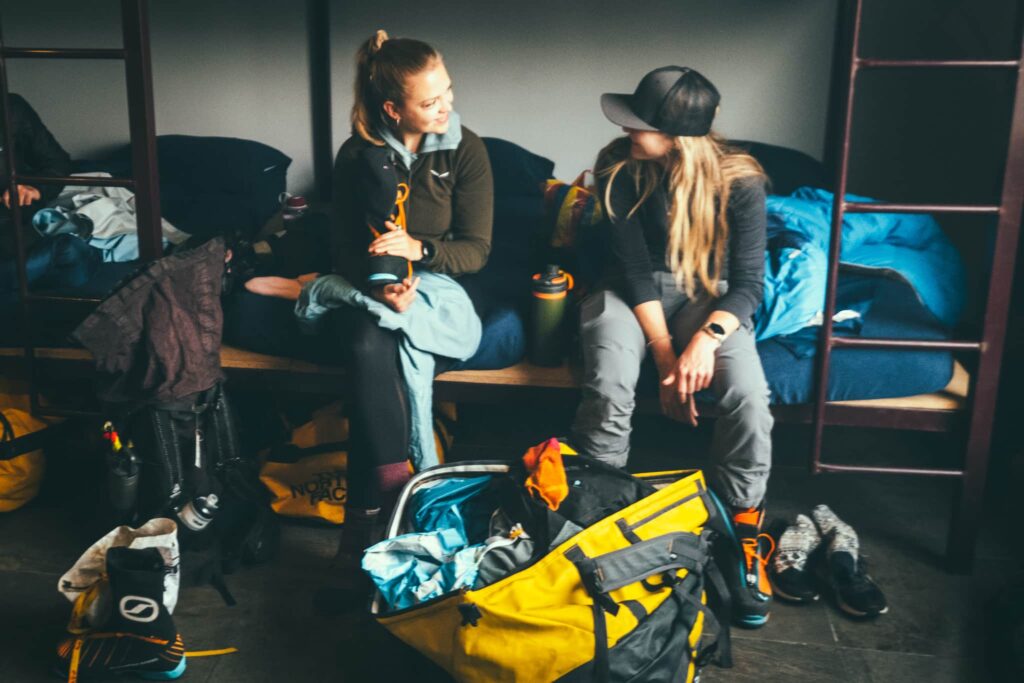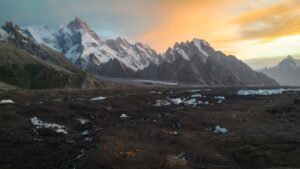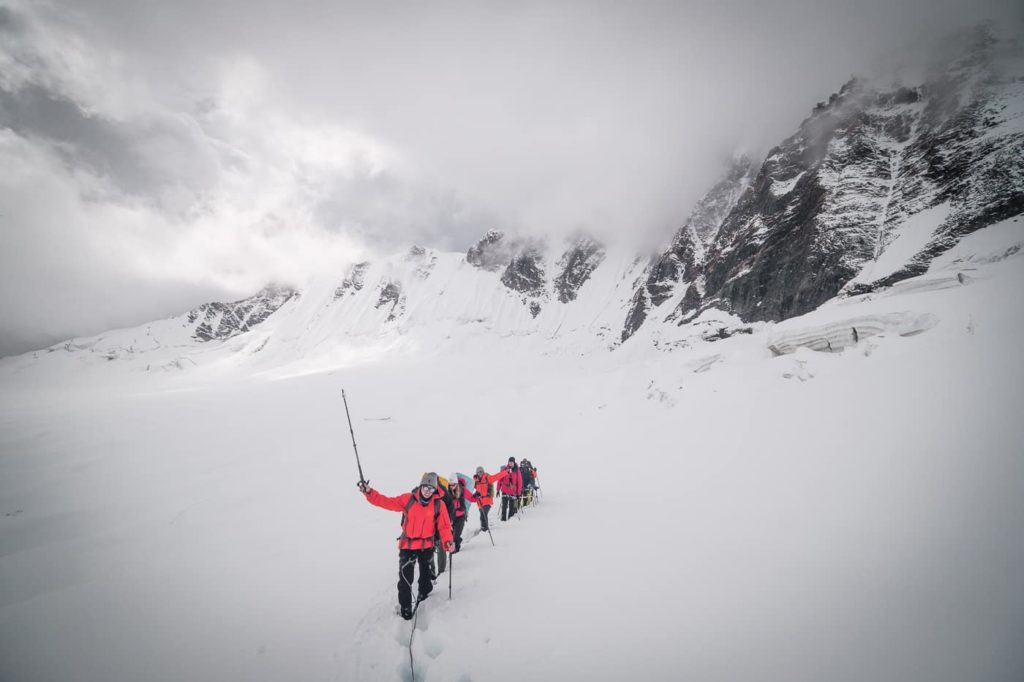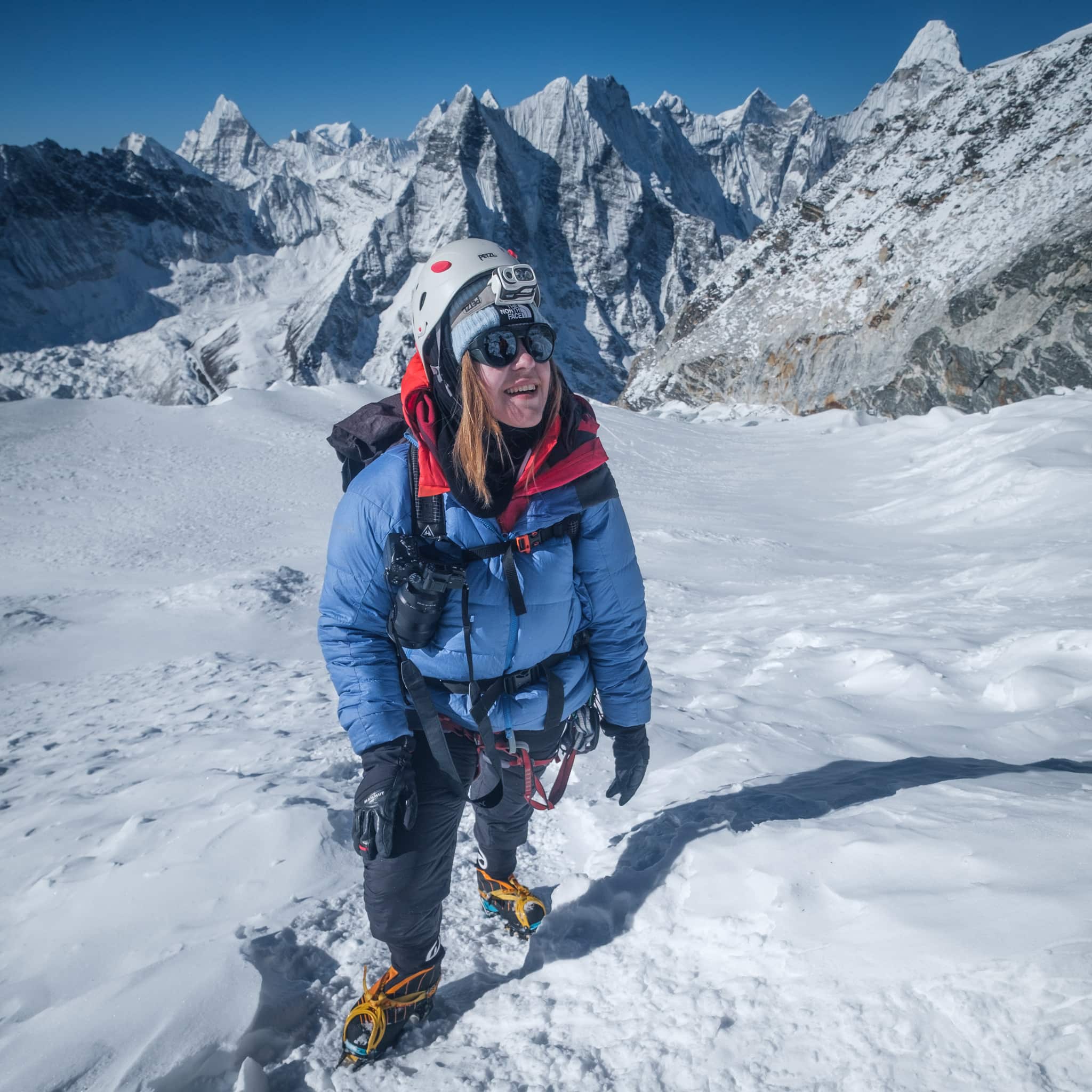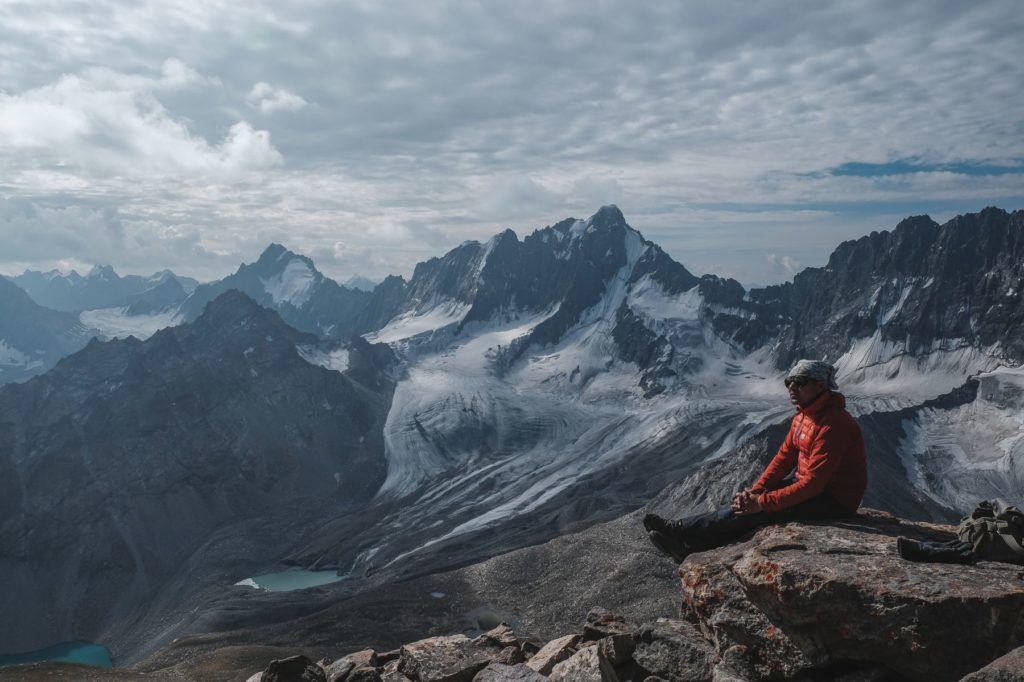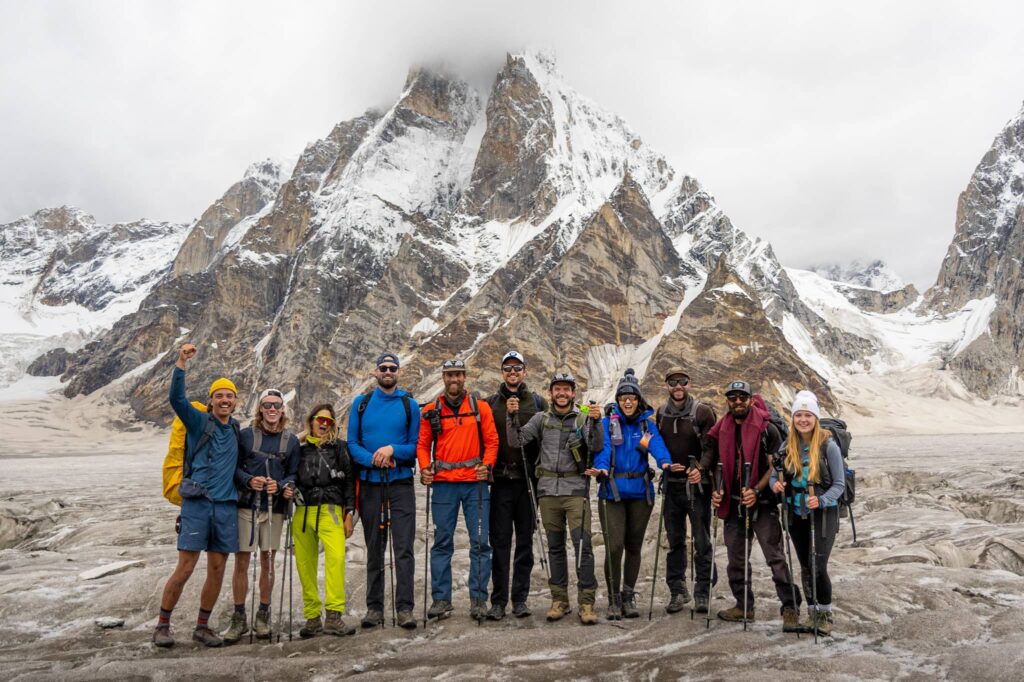Everyone loves a good adventure, but it can be challenging to take your aspirations and get out the door. The whole process feels vital to the success of the expedition, and also extremely tedious.
Yet planning helps. Learning about the expedition gear that’s best for a particular adventure, and evaluating its weight and function can help to weed out unnecessary equipment. This is also the stage in which you’ll learn how to equip yourself for anything.
Whether you’re headed to K2 base camp or you’re just hoping to get out for a jaunt somewhere near home, expeditions can be empowering, fun, and even life-changing. However, learning how to prepare and pack to accommodate these expeditions is essential.
What kind of expedition gear do you need?
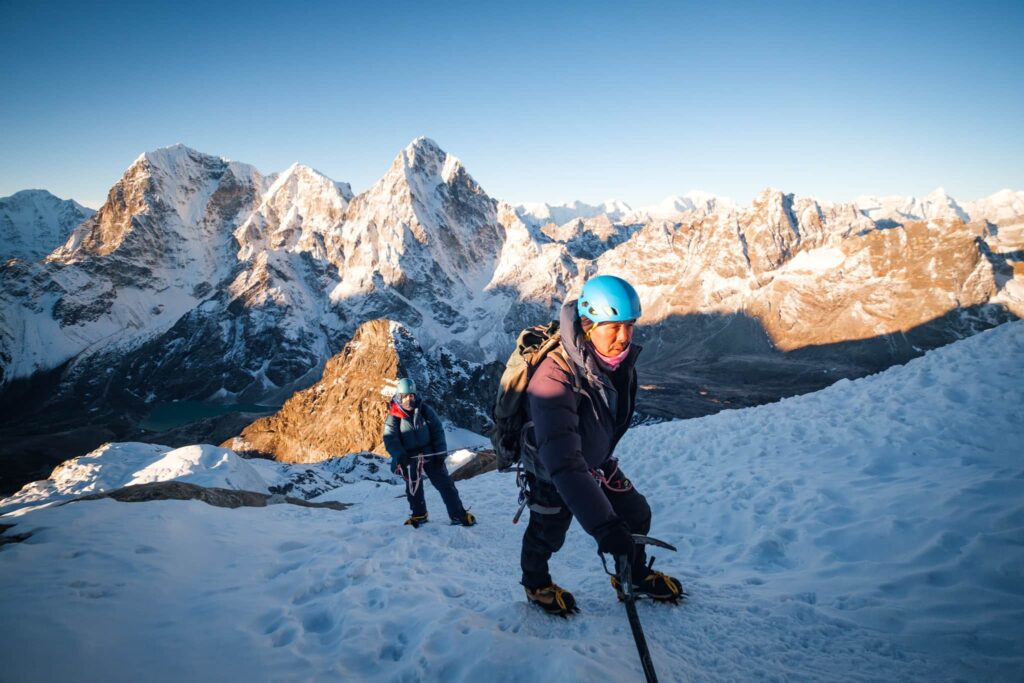
The truth is that expedition gear plays a significant role in providing comfort and security during a trip. Ensuring that you pack the right combination of expedition clothing, and high-altitude gear is a great way to set yourself up for success.
While some expedition equipment can vary based on the needs of each trip, other items remain constant. Here’s a comprehensive checklist of the best expedition gear to have on your next adventure.
Expedition Clothing
One of your first defenses against volatile weather is your expedition clothing selection. The right expedition wear is like a system, giving you the ability to easily add or shed layers while maintaining comfort and mobility. This generally involves layering pieces of clothing to trap body heat when necessary, while allowing you to shed it depending on the conditions.
Base Layers
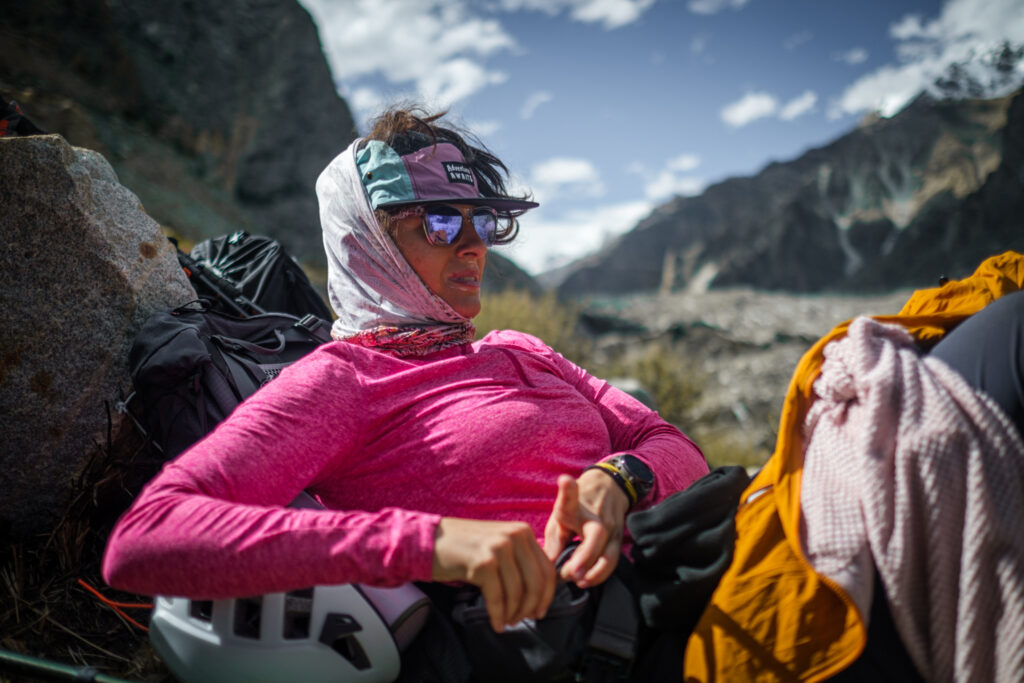
A quality set of base layers functions by wicking moisture away from the skin while trapping your body heat. Base layers come in multiple weights including ultralightweight, lightweight, midweight, and heavyweight options. Lighter base layers are designed to accommodate cool environments while heavyweight layers fit extreme environments where temperatures dip below 0 degrees.
A few of our favorite base-layers include:
- Ibex Woolie Pro Tech Bottom & Top: These are made with merino wool and nylon to create a lightweight layering system with a lot of give.
- Smartwool Classic Thermal Merino Bottom & Crew: Ideal in cool to cold temperatures, these pieces provide breathability that many base layers lack.
- Icebreaker Merino 200 Leggings & Crew: The 200g design makes these a great medium base layer option.
Insulating Layers
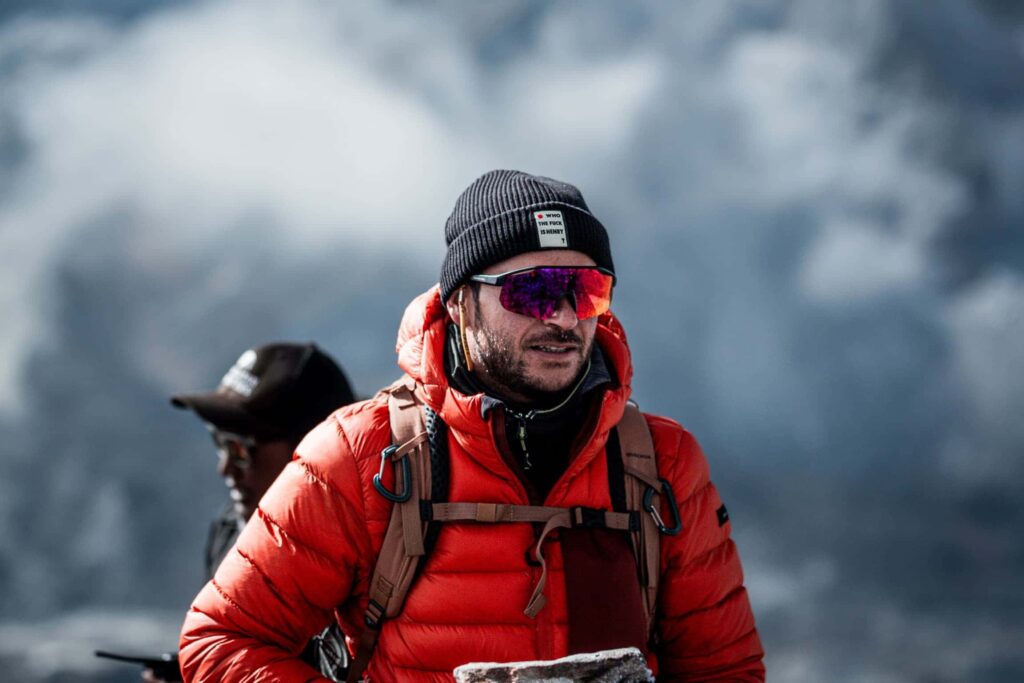
Base layers provide a key insulative layer against the elements, but your next defense is your insulating layer. This could include anything from a fleece, to a softshell mid-layer or down jacket or even a combination of pieces, depending on the situation. This layer should aggressively trap heat around your body to keep it warm in even the chilliest of environments.
A few of our favorite insulating layers include:
- Mountain Hardwear Polartec Fleece: A high-loft fleece that’s made out of polyester and elastane. This is a great mid-layer piece for cold weather.
- Arc’Teryx Cerium LT Hoodie: This 850-fill power goose-down jacket is lofty and extra warm. At 10.8 ounces, it’s also relatively lightweight.
- Patagonia Nano Puff Jacket: This is a great synthetic insulating layer for moderate expeditions. It’s also made with 100% post-consumer recycled polyester.
- Rab Neutrino Pro Jacket: An iconic, lightweight parka, this down jacket accommodates technical expeditions while providing extra warmth.
Outer Layers (Shells)
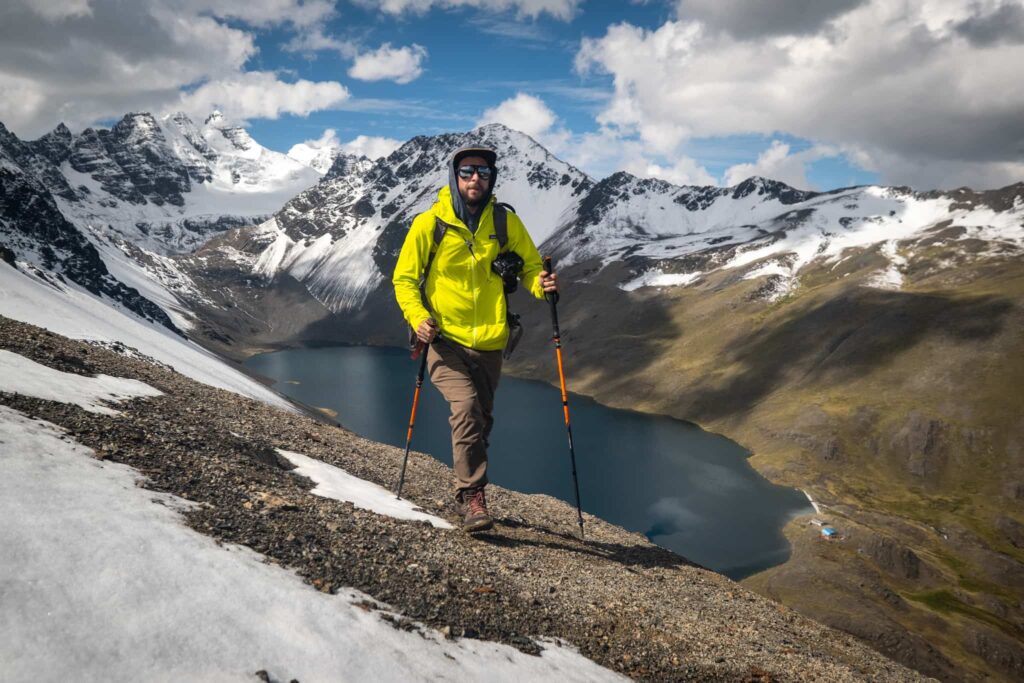
Insulating layers are a key piece of any expedition, but the reality is that they don’t usually provide weather protection. This is where outer layers or shells come in. Shells are designed to protect you from the wind, rain, sleet, and snow, which in turn keeps your insulating and base layers functioning in tip-top condition.
A few of our favorite outer layers (shells) include:
- Helly Hansen’s Verglas Infinity Shell Jacket 2.0: Made out of 100% polyester material, this jacket is helmet-compatible for those high-tech adventures.
- Gorewear Concurve GTX Jacket: The Gorewear Concurve is a nice light shell for small expeditions.
- Arcteryx Gamma Pants: These pants provide a great wind and moisture layer against the elements.
Expedition Footwear
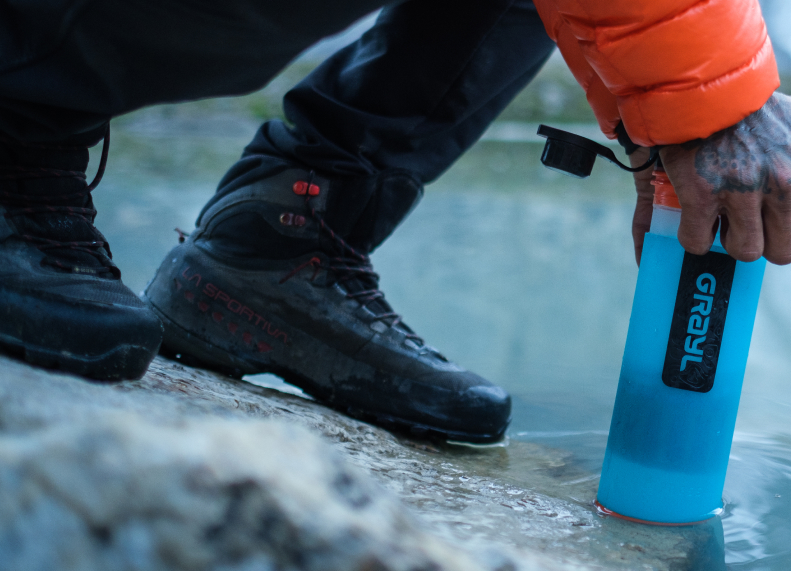
Every expedition has different needs when it comes to gear selection. This is one reason why footwear varies widely from trip to trip. No matter the excursion, expedition footwear should be comfortable, durable, and protective. This better allows you to stay safe while in the wilderness.
A few of our favorite footwear picks include:
- La Sportiva Nucleo High GTX Boot: A great waterproof hiking boot selection, these have a 3D flex ankle hinge to support movement amidst moderate adventures.
- Oboz Whakata Coast Slip-On Shoes: Not everyone is into camp shoes, but these shoes are comfortable, great in wet environments, and even protective around the toes.
Not sure what kind of boots to bring? We broke down hiking boots and mountaineering boots comprehensively in a recent article so that you know when to use what.
Expedition Camping Supplies
Expedition clothing is an invaluable part of any trip, but camping supplies are equally as important. Packing the appropriate expedition equipment like a high-quality tent, sleeping bag, sleeping pad, and cookset goes a long way in ensuring the success of a trip. Gear items like these not only contribute to a comfortable journey, but they can also significantly enhance safety.
Taking time to carefully curate these gear items will also help you to fine-tune your pack weight. So, make sure to spend some time thinking about your big three items (your tent, sleep system, and backpack).
Tents
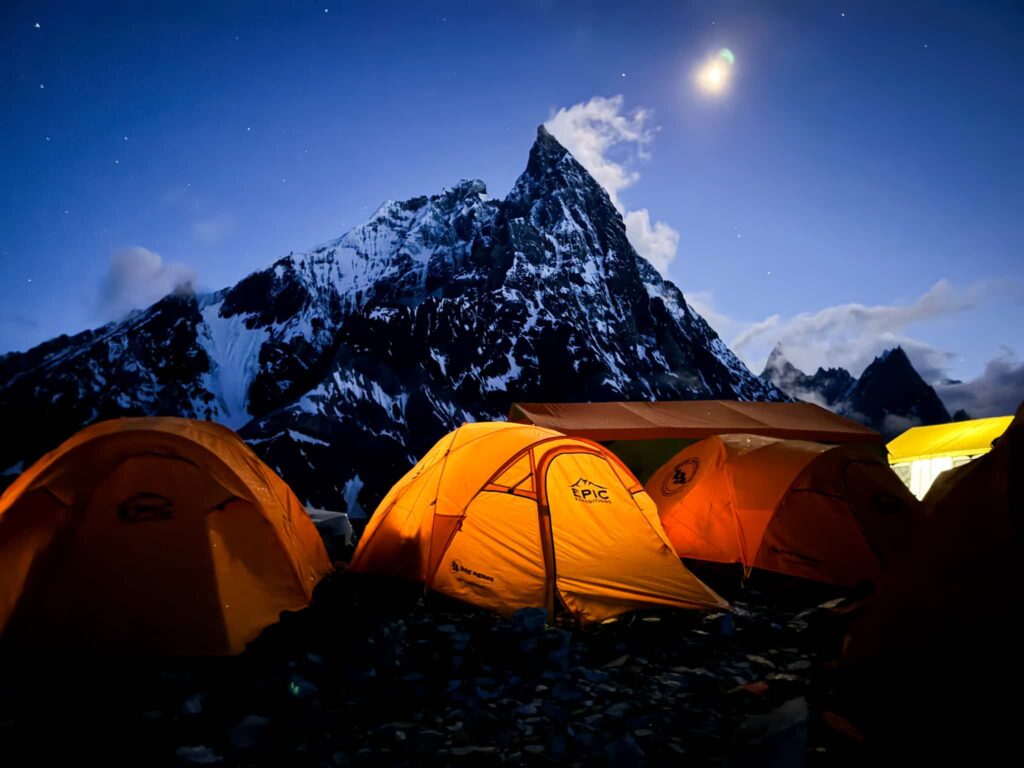
A high-quality tent should be lightweight, durable, and stand up to the wind without issue. Depending on the expedition type, you might opt for a 4-season tent for added warmth and protection during super frigid nights. Moderate, and warm trips may benefit from a 3-season tent with a lighter design.
A few of our favorite tents include:
- MSR Remote 2 Tent: Built for snow and ice, this tent is a good 4-season product for intense conditions.
- MSR Elixir 2 Tent: A quality 3-season tent, the Elixir 2 is free-standing for a comfortable and spacious stay.
- Outdoor Vitals Fortius 1P Tent: This is a great ultralight tent option for those who like to travel light and fast.
Sleeping Gear
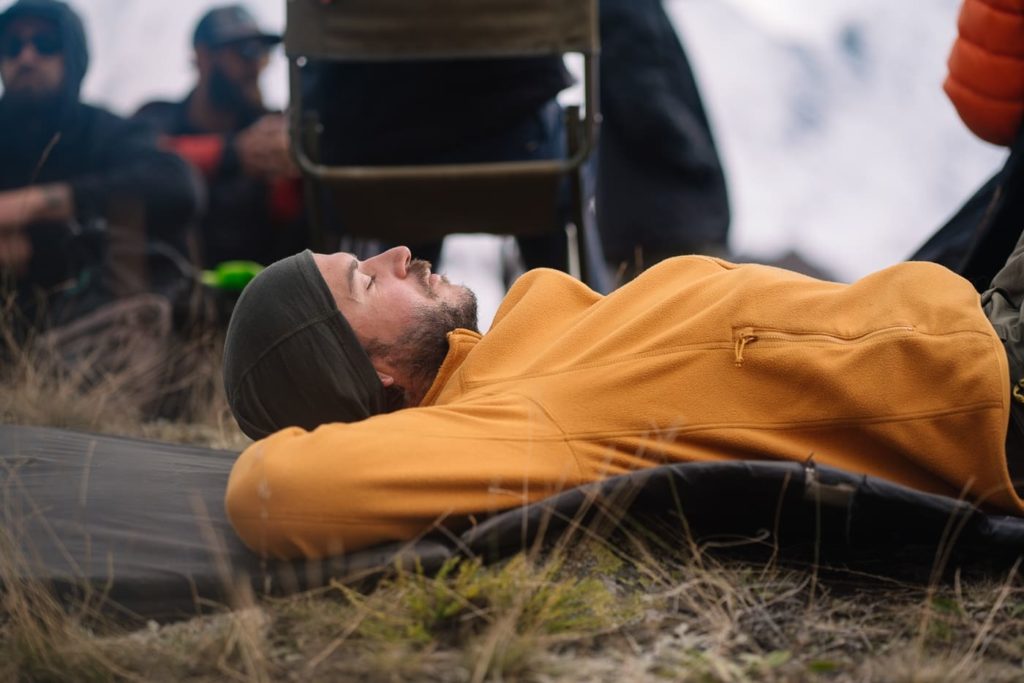
Poor sleep while on an expedition can make the whole experience really unfortunate. You might struggle with the up hills, or have a hard time enjoying yourself. And it can be really difficult to transition from a cushioned bed to the hard ground while you’re in the woods.
However, electing appropriate sleeping gear that caters to a specific temperature range is a surefire way to give yourself the best shot at staying rested while on an expedition.
Make sure to evaluate sleeping bag temperature ranges (they usually come with a comfort rating as well as a survival rating) and sleeping pad ratings (these come on a scale as well, with higher numbers alluding to a warmer sleeping pad option). While most adventurers know they need a warmer sleeping bag, the sleeping pad is an often overlooked but essential piece of the equation.
A few of our favorite pieces of sleeping gear:
- Sea to Summit Spark Sleeping Bag: This bag has temperature ratings that range from 0 to 45 degrees. It’s packable, lightweight, and great for 3-season adventures.
- Katabatic Grenadier Ultralight Quilt: With a temperature rating of 5 degrees, this is one of the lightest quilts on the market, and it could easily be combined with a secondary bag for 4-season comfort.
- Sea to Summit Ether Light XT Sleeping Pad: A 4-season sleeping pad that weighs 1 pound and 9 ounces and has an R-value of 6.2 (or one of the highest on the market).
- Thermarest NeoAir Xlite Sleeping Pad: A Classic 3-season sleeping pad, the XLite is both comfortable and lightweight.
Cookware and Hydration
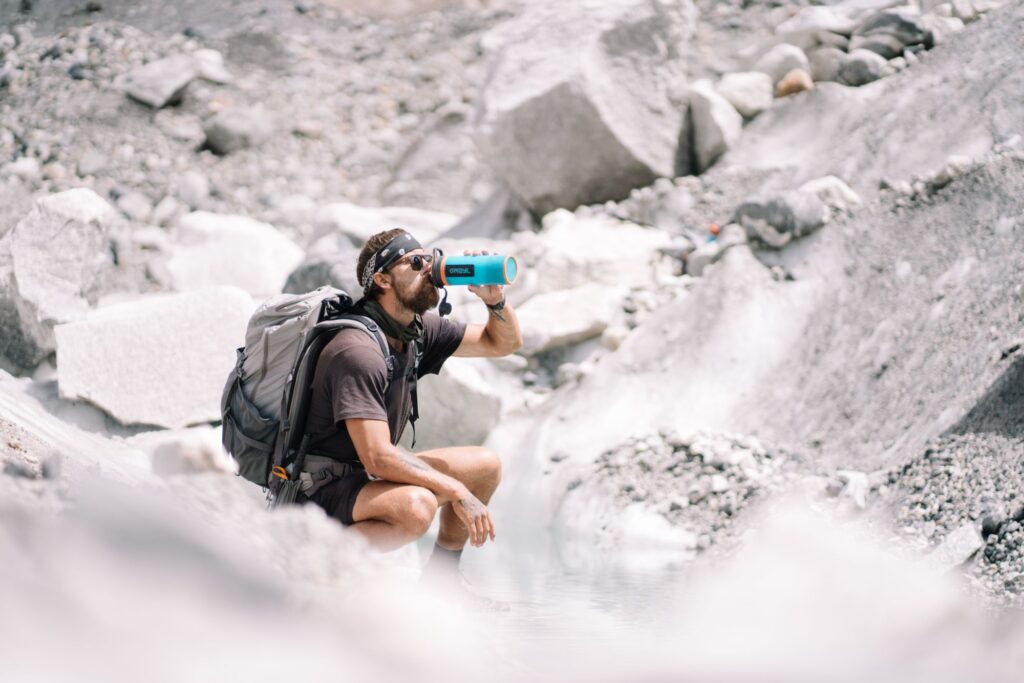
Most expeditions come with a lot of camp downtime, which provides a great opportunity to nourish yourself and make a warm drink. This is where cookware and hydration gear come in.
Standard expedition gear should include a basic stove for boiling water, a pot, a filter, and some type of cutlery. Those with a flair for the extravagant will also occasionally pack items like a pour-over or even a skillet.
Keep in mind that some types of fuel perform better at high elevations than others, so you’ll want to determine where you’ll be camping and how cold the temps might be before selecting your stove.
A few of our favorite cookware and hydration picks include:
- MSR Pocket Rocket: A lightweight stove pick that’s ideal for boiling water. It weighs just 2.6 ounces.
- Toaks Light Titanium Pot: Designed for compact, personal use, this cook pot weighs just 2.8 ounces.
- GRAYL Filtered Water Bottle: This is one of the best water filtration systems on the market and is a real game-changer. It’s effective, lightweight, and easy to use. Everyone here at Epic uses one and they are mandatory to bring on many of our trips.
Technical Expedition Equipment
Some expeditions can be truly remote, which makes packing technical expedition equipment important. Whether you’re headed to the wilderness or looking to link up a bunch of alpine pitches, bringing the right gear supports the mission.
Missions that involve rugged alpine environments and route finding should also involve safety and navigation equipment.
Navigation and Communication
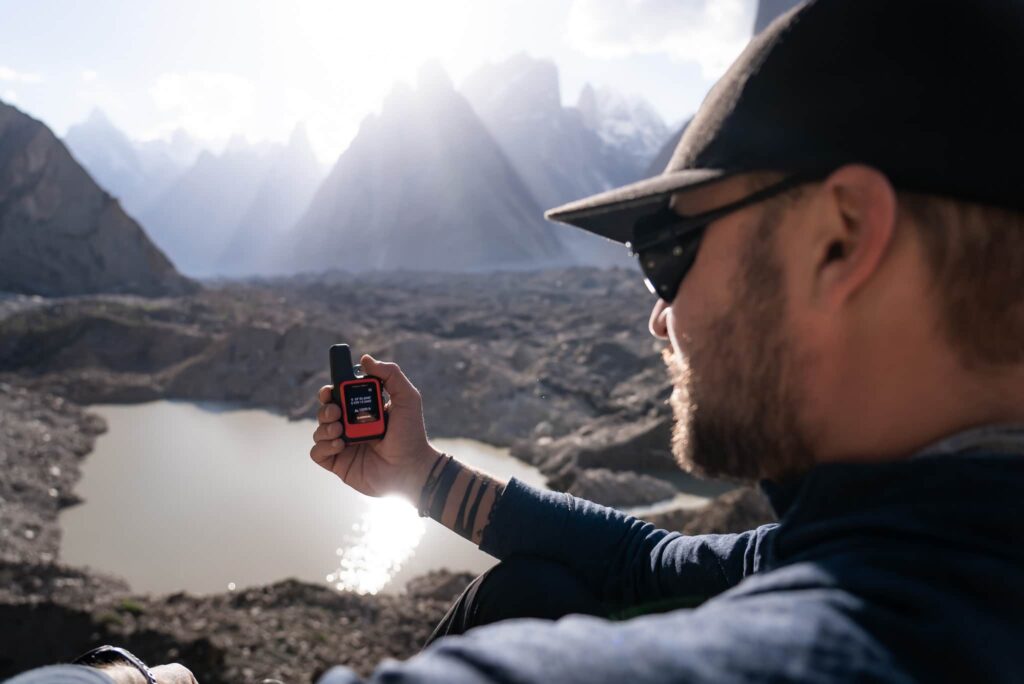
The deeper into the wilderness you travel, the harder it can be to communicate and determine where you are. This is why packing equipment that’s specifically designed for this setting is essential. Bringing items like a GPS-enabled device, map and compass, and even a satellite communicator can be the difference between life and death in some situations.
A few of our favorite navigation and communication devices include:
- The Garmin inReach Mini: A two-way communication device that allows you to share your location and download maps.
- The Suunto 9 Peak Pro Watch: A useful hiking watch with an altimeter that allows you to download maps and safely navigate through the mountains even while you’re “off the grid”.
Safety and Emergency Gear
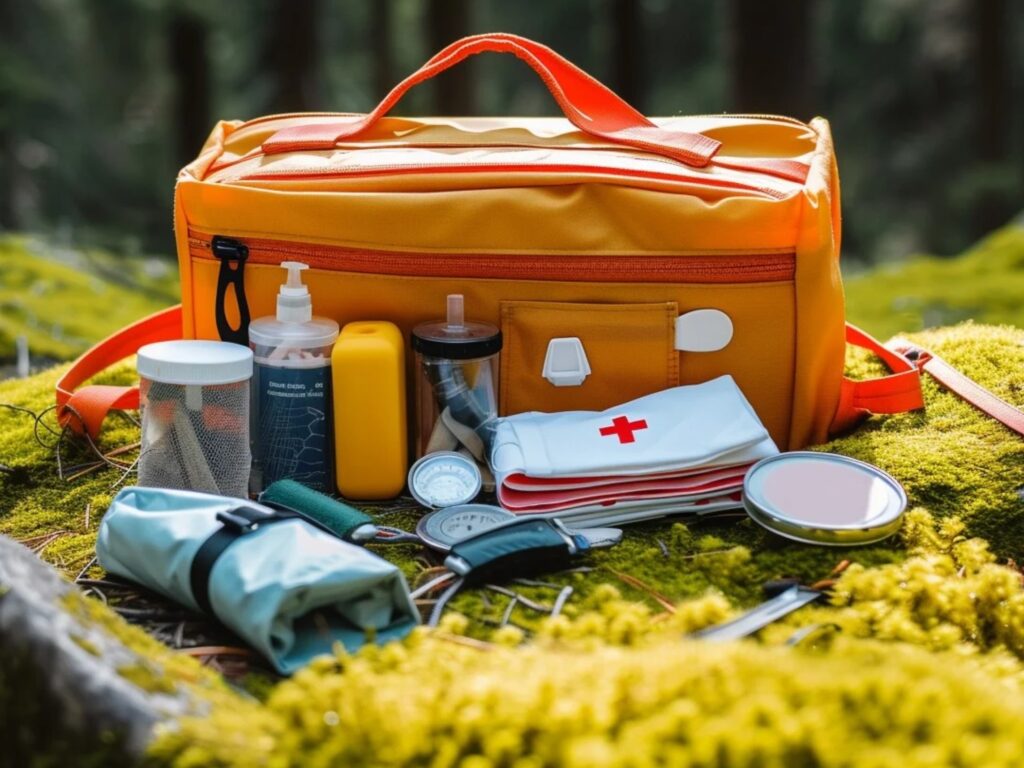
No one wants to end up in an emergency situation completely unprepared. While most of the time, plans go according to plan, the mountains can be unpredictable and tough to navigate. This is why adventurers should always bring safety and emergency gear on expeditions. This type of equipment can help to prepare and stabilize an injured person while they wait for a rescue, or to fend off hypothermia.
A few of our favorite safety and emergency gear picks include:
- First Aid Kit: First aid kits are customizable but generally come with essential medical supplies.
- Emergency Bivy: An emergency bivy is a great piece of gear to have if you end up unexpectedly caught in the mountains overnight. It can provide extra insulation in chilly situations.
- Multi-tool: A quality multi-tool can be used to make simple gear repairs along the journey.
Climbing and Protection Gear
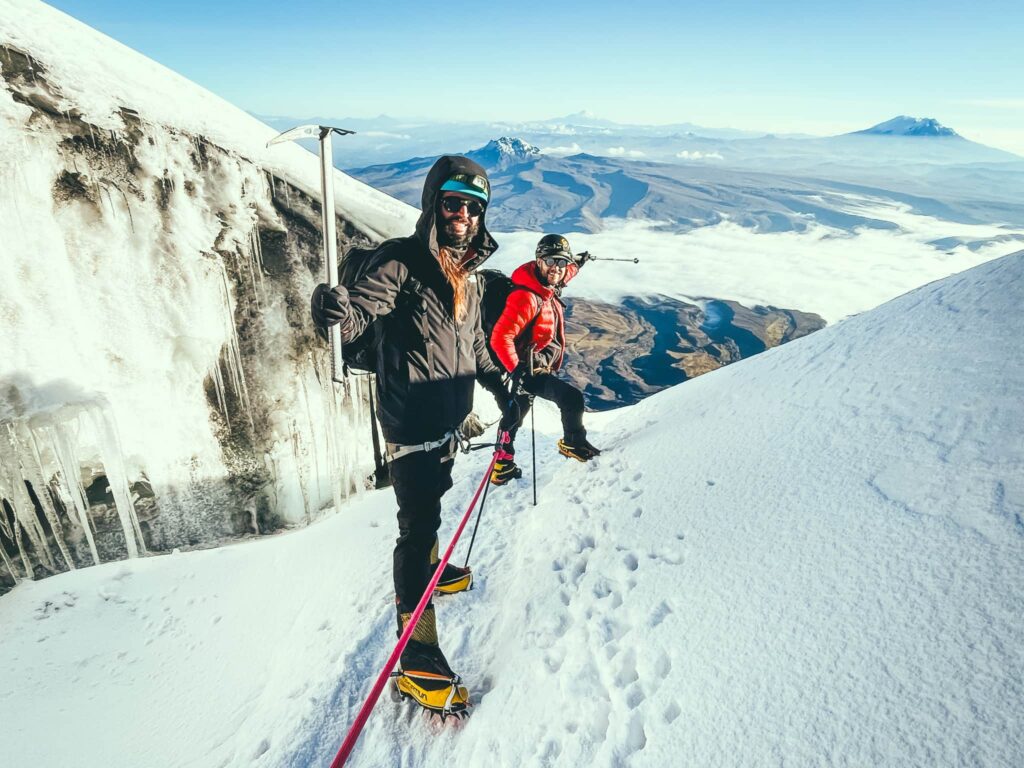
If you’re not sure whether or not you should bring climbing and protection gear for a particular expedition, you probably need a guide.
Climbing and protective gear are used in highly technical environments that involve class 5 exposure and slippery terrain. Basic climbing and safety equipment can be critical in these environments.
Some of our favorite climbing and protection gear include:
- Black Diamond Momentum Climbing Harness: This is a great harness for glacial or alpine climbing due to its lightweight design.
- Petzl Vasak Crampons: Crampons like these can be essential in icy terrain.
- Black Diamond Raven Ice Axe: Any time you expect to be on exposed, snowy terrain, you should carry an ice axe like this one.
Expedition Packing and Travel
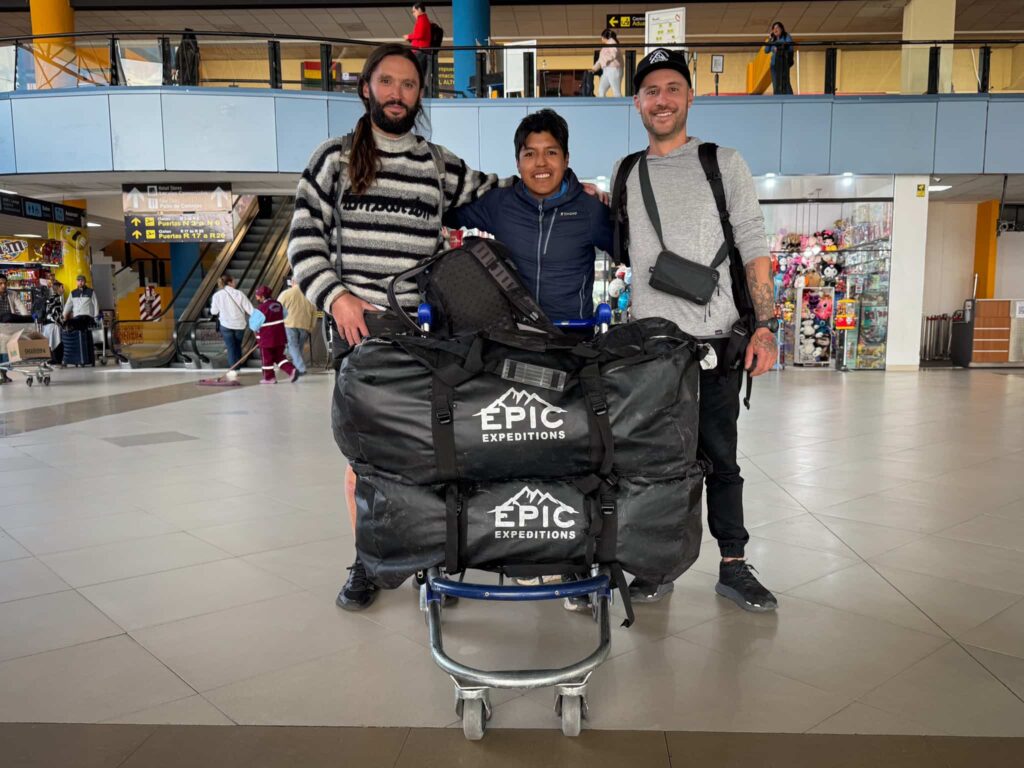
Expeditions often involve a lot of gear. Determining how to best pack that gear can be a challenge.
One key component that goes into this whole process is selecting the right backpack. While fair-weather expeditions can involve smaller, more lightweight backpacks, winter expeditions might require a sturdier pack. The key to this part of the process is to organize your equipment effectively to ensure that you’re always ready.
Some of our favorite expedition backpacks include:
- 40L Osprey Talon Pro: This is a good entry-level backpack for moderate adventures.
- Hyperlite Mountain Gear Southwest 70 Pack: We’re generally of the belief that if you have extra space, you’ll use it. So, you don’t want to go too big when it comes to an expedition pack. But the Hyperlite Southwest 70 is an exception to this rule since it’s still extremely lightweight and efficient for its size.
- North Face Expedition Duffel: Duffels are more practical if you need to pack in a lot of gear and have a porter team to assist. 100-120 liter duffel sizes are good for most expeditions.
Preparing for Your Next Mountain Expedition
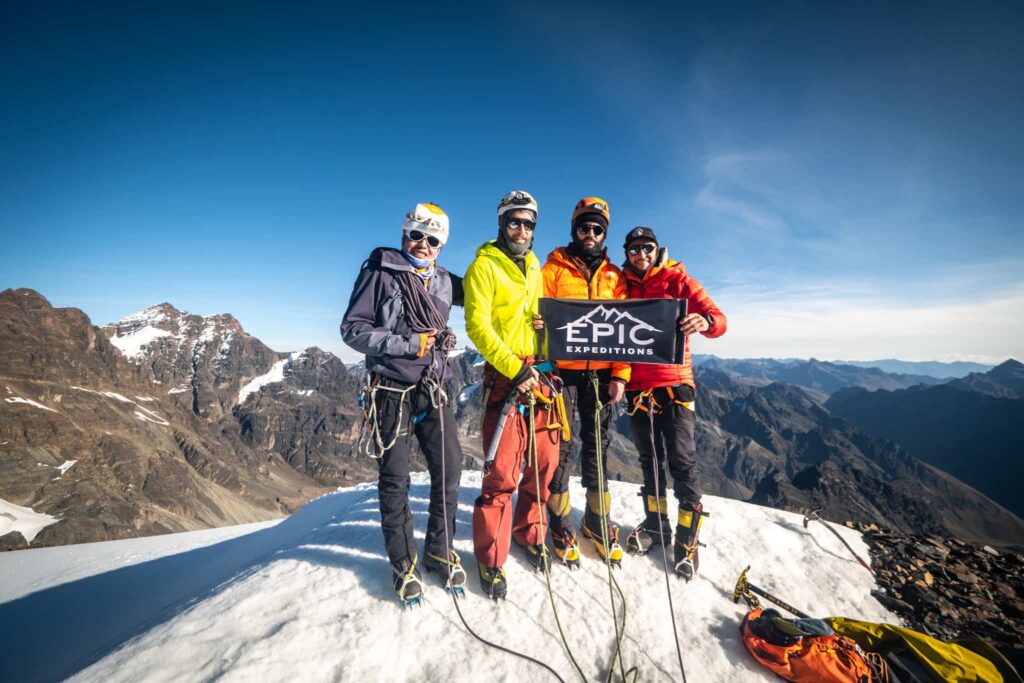
Preparing for a mountain expedition of any kind can be an intimidating task. Even veteran climbers and backpackers are prone to forgetfulness.
Yet taking steps like packing the best expedition gear, evaluating your mountain equipment, and testing your setup before heading into the wilderness can help. Ensuring that you have quality expedition clothing, camping supplies, and technical equipment is one essential piece in the process. Evaluating nutrition and booking travel insurance might be another important step.
Before you go, double-check your system, make gear adjustments, and make sure your system caters to the environment in which you’ll be traveling.

